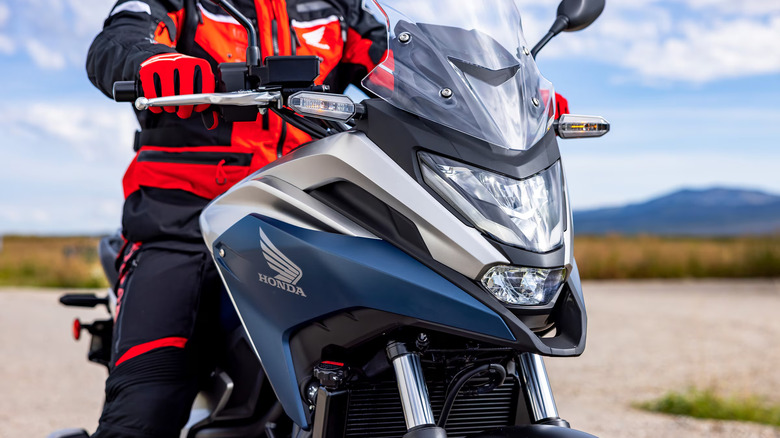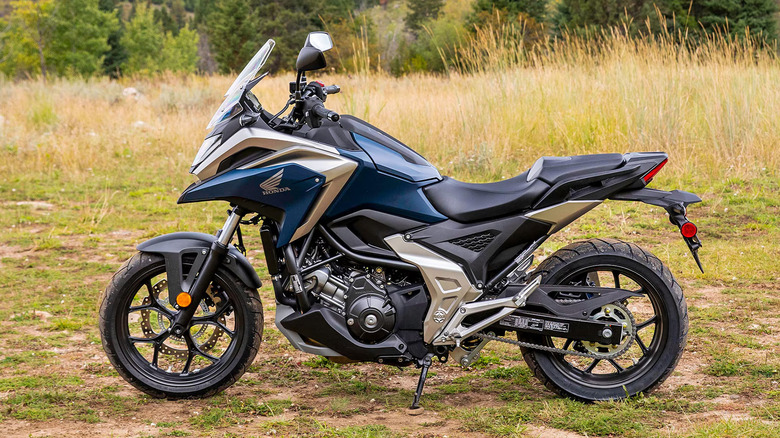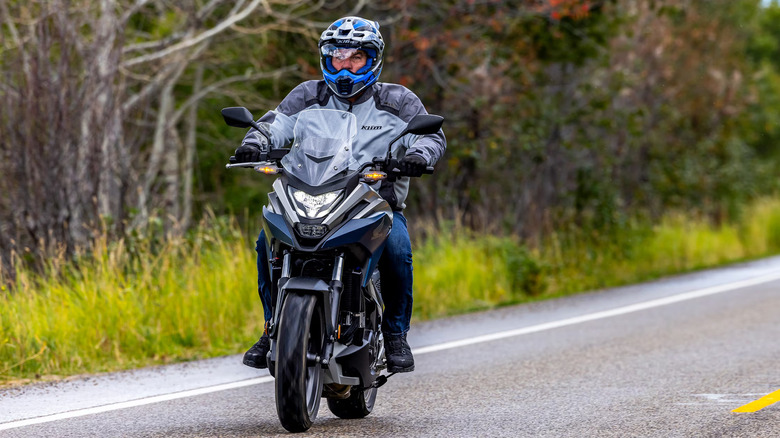How Honda's NC750X Automatic Dual Clutch Transmission (DCT) Works
Choosing between motorcycle transmission types these days is a bit more complicated than a simple manual-versus-automatic decision. In reality, it's more like four transmission options: automatic, manual, dual clutch transmission (DCT), or electric.
So what is DCT, and how does it work in Honda's NC750X motorcycle? Well, it's complicated, but also not really. The transmission system acts like an alternating pair of manual clutches, with gears going from first to sixth. It's very similar to how DCTs are set up in cars (when the option is available).
The act of shifting with a DCT is a much simpler process when compared to standard manual shifting on a bike, with the rider only needing to push a button or two. Or, if opting to use the automatic setting, not pushing any buttons at all to shift. Of course, those simple button presses (or non-presses) only work because of the intricate setup of clutches and gears they're connected to.
How DCT works
In basic terms, a DCT is essentially set up like a manual transmission but with the clutch and shift functions handled automatically. Shifting bounces back and forth between two alternating clutches — with one handling the odd-numbered gears (1, 3, and 5) and the other the even numbers (2, 4, and 6).
Turning on the engine will set the DCT to neutral, at which point pressing the D switch by the right thumb will shift the bike into first gear. This activates the first of the two clutches (the one for odd numbers) via hydraulic pressure and gets the bike on its way. As the bike accelerates and it's time to shift up, both first and second gears will be engaged simultaneously before the second clutch is connected (even numbers), so second gear won't actually be powered yet.
After that, the first clutch (for odd numbers) will disconnect while the second clutch (even numbers) connects within the same instance, and first gear settles back into its original unused position. This same process applies when going through higher gears or downshifting — just with the clutches and gears alternating in a different order.
What DCT means for riders
DCT provides riders with a choice between transmission types — think of it as the best of both worlds of automatic and manual — while also promising smoother transitioning between gears due to the alternating clutch structure. On top of that, the rider can toggle between two drive modes: Drive (for regular riding and fuel efficiency) or Sport (higher rpms for up- and downshifting).
Setting the DCT to AT (automatic) mode will have the bike shift through gears during acceleration, braking, and other situations on its own. MT (manual) mode lets the rider switch gears up or down as they see fit using a pair of shifters on the left handlebar, rather than the typical manual shifting method of pulling the clutch lever, repositioning the gear pedal, releasing the clutch lever, etc. Additionally, while driving in AT mode, riders can still opt to manually shift should the occasion call for it, after which point the transmission will slip back to automatic.


